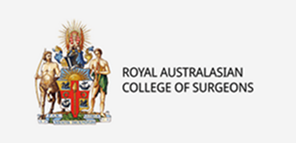- 0401 792 644

- 0401 792 644

A mastectomy involves the surgical removal of the entire breast on the affected side. Several options and types of mastectomy exist, and the choice depends on whether breast reconstruction is planned at the same time.
In this operation, the entire breast is removed, including some of the overlying skin and the nipple. It is typically performed when breast reconstruction is not being undertaken. The goal is to achieve a flat chest surface to support wearing an external prosthesis in a bra. The position of the scar depends on the tumour location and the shape of the breast. In most cases, it is kept low to remain hidden under low-cut clothing.
This procedure removes the entire breast, some overlying skin, and the nipple. It also includes removal of the fascial lining over the chest muscles and, occasionally, part of the chest wall muscle. It is generally used for large cancers that appear to involve the underlying chest wall.
This type of mastectomy is performed to preserve most of the skin over the breast, allowing for immediate reconstruction. The entire breast and nipple are removed. This operation is considered equally effective as standard mastectomy in suitable cases. In certain prophylactic (preventative) cases, the nipple can be preserved. This is called a nipple-sparing mastectomy.
Lymph node surgery helps determine whether the cancer has spread beyond the breast and whether additional treatment such as radiotherapy or chemotherapy is needed. Sentinel node biopsy (SNB) involves removing one to three lymph nodes that are the most likely to contain cancer cells. These nodes are identified using a radioactive tracer and/or blue dye. If cancer is found in these nodes, a more extensive procedure known as axillary clearance, which removes all lymph nodes in the armpit, may be required.
The following are typical steps before surgery. Your experience may differ depending on your specific circumstances:
You will be admitted on the day of surgery. You will fast for six hours and be re-examined, with the planned scar site marked on your breast. If the tumour is not palpable and was found on imaging, a wire may be inserted by radiologists to guide the surgery.
The surgery typically lasts 1 to 3 hours, depending on the extent of breast and lymph node involvement. Dissolving sutures and a waterproof dressing are used. You may shower with the dressing in place but avoid rubbing or soaking it. The dressing can be removed after one week. A supportive bra may be recommended to wear day and night for a couple of weeks.
A plastic drain tube is inserted during surgery and positioned away from the wound. It remains for 2 to 10 days to collect residual fluid and blood. You can move about with the help of a small bag for the drain. Most patients stay in hospital for 2 to 3 nights and can go home with the drain. APAC nursing staff will visit you at home, assist with drain care, and remove it based on Dr Noushi’s instructions. Sometimes, fluid called a seroma collects even after the drain is removed and may be aspirated painlessly in the clinic.
Pain after mastectomy is generally minimal. Most patients experience mild discomfort managed with simple pain relief. Discomfort may be greater if lymph nodes from the armpit (axilla) or chest (internal mammary nodes) are removed. This usually resolves within a few days. Recovery time and return to work will vary based on the extent of surgery and required follow-up treatment.
All surgeries carry risks. While serious complications are rare, you should be informed of possible issues:
Specific risks related to breast surgery include:
After lymph node surgery, patients may experience shoulder stiffness or arm discomfort. These symptoms typically resolve with physiotherapy and exercises, which will be initiated soon after surgery. A condition known as lymphoedema, which causes swelling of the arm, occurs in a minority of patients who undergo full axillary clearance. Scarring, nerve sensitivity, and changes in skin colour from blue dye are other possible side effects. Blue or green discolouration of urine or stool is harmless and temporary.



